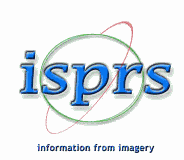|
Introduction to Geographic Information Systems (International Edition): K.T. Chang, McGraw-Hill, New York, 2006. Paperback, 432pp. Reviewed by Prof. Zhilin Li, Dept. of Land Surveying and Geo-Informatics, The Hong Kong Polytechnic University, e-mail: lszlli@polyu.edu.hk It can be found from the market that a number of GIS books are entitled "Introduction to Geographic Information Systems" or have similar titles. Most of such books provide the basic concepts, principles and operations of a geographic information system (GIS). It can also be found that some other books on GIS are very software-specific, such as "Inside ArcView GIS", "Inside Geomedia" and so on. The book by Chang blurs the concepts and principles of GIS and Arc/Info implementation together, so as to provide students with an integrated textbook. In some sense, it is unique in the market. This book consists of 19 chapters. In this book, two chapters was designed to provide overviews, one for the contents of the book (i.e. Ch1 Introduction) and the other for GIS modelling (i.e. Ch19 GIS models and modelling). Chapter 2 (Coordinate system) describes mathematical background on coordinate systems and map projection. Chapters 3-5 provide a comprehensive coverage of data models (i.e. Ch3 Georelational vector data model, Ch4 Object-based vector data model & Ch5 Raster data model). Chapters 6-9 cover data processing and management (i.e. Ch6 Data input, Ch7 Geometric transformations, Ch8 Spatial data editing & Ch9 Attribute data input and management). Chapter 10 (Data display and cartography) discusses cartographic representation of spatial data. Chapter 11 (Data exploration) addresses spatial query and data exploration; and Chapters 12-18 cover various types of spatial analysis (i.e. Ch12 Vector data analysis, Ch13 Raster data analysis, Ch14 Terrain Mapping and Analysis, Ch15 Viewsheds and Watersheds, Ch16 Spatial interpolation, Ch17 Geocoding and dynamic segmentation & Ch18 Path analysis and network applications). It is clear that this book is very strong in technical aspects. In particular, it provides a very comprehensive coverage of spatial analysis. However, it doesn't have much coverage in "soft" aspects of GIS such as design and implementation, human factor, organizational issues, etc. Indeed, these topics may be beyond the introductory level. This book has some very good features. First, a set of questions is included in each chapter for review purpose; second, some challenging application tasks are provided for students to re-enforce the learned concepts; and third, some boxes are also included in the text to provide extra information for those demanding readers. A CD containing materials for tutorials or labs is accompanied. For each chapter, a few sets of data are provided for exercises. This would be very useful for class teaching and especially self-learning purposes. However, these materials are very Arc/Info specific. Also in the CD, a file containing the hyperlinks to the websites cited in the book is enclosed. In general, the structure of the book is reasonable. However, sometimes, the arrangement of contents seems strange to the reviewer. For example, Chapter 6 describes various types of spatial data but title of this chapter is "Data Input". In Chapter 7, "resampling of pixel values" for images has been included although the title is "geometric transformation". It seems that resampling in this case is not a geometric transformation as such and is better called a radiometric transformation. Alternatively, those interpolation techniques for resampling may be discussed in Chapter 16. In Chapter 8, a large portion is devoted to errors in spatial data but the title is spatial data editing. In Chapter 11, three out of five sections are devoted to data query although the title is "data exploration". In the end of this chapter, one section called geographic visualization is more relevant but it simply contains such topics as data classification, spatial aggregation and map comparison. The content of this book is more than sufficient as an introduction to GIS. However, careful consideration must be taken before the use of this book as a textbook because it is very Arc/Info-oriented and has emphasis on spatial analysis. If you don't use Arc/Info for your teaching, you may feel very disturbed. In my view, this book is best used as the textbook of the first GIS course in "BSc in GIS" and/or "MSc in GIS", because in such programmes there are also subjects covering other aspects of GIS such as "Design and Implementation of GIS". In particular, this could be an excellent textbook for self-learning |
|
|
|
|
